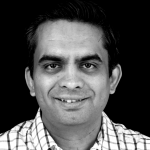Industry
Transport and Logistics
Offering
Legacy App Modernization
Cloud
AWS
Published On
August 20, 2022
Customer Overview
The customer is a global shipping giant, headquartered in France, that acquired another shipping company. Consequently, it also acquired shadow IT systems (referred to as ‘Agency Systems’), that were not centrally managed, from the merger.
To organize these systems, and bring in centralized governance, the company embarked on a cloud transformation journey. As part of this initiative, its Singapore business was planning to deploy the Agency workload onto an AWS environment. Through the Agency to Cloud (A2C) program, all Legacy Shadow IT applications were transferred to the cloud, giving centralized access to users from anywhere.
Existing Challenge
- The previously existing application was a Visual Basic 6 client application running on Windows that was deployed locally and had a back end (MS Access database), which was shared by multiple BUs.
- There were extended outages and downtime during individual client deployments.
- Since this was a client-server application, scaling to allow seamless access to a wider audience within the organization was a challenge. Additionally, release cycle times for changes were longer and business requirements had to be consolidated to reduce the risk of deployment-related outages.
- The business identified the potential risk associated with relying on the legacy non-scalable database (MS Access), especially from a data loss perspective. MS Access was also unsupported by Microsoft at this time which could cause potential security risks.
- The overall objective was to have a centralized, scalable, container-ready solution with a modern Cloud Database platform and technology solution that would accelerate rollouts and their frequency with minimal risk, caused by outages, during feature roll-outs
Solution Overview
Owing to the high operational overhead and agility required to leverage Lambda & API gateway, a serverless deployment architecture design was recommended. The Lambda codes were migrated into a centralized git repo (code repo) and built via a deployment pipeline using code build, code commit, and code pipeline with CloudFormation for deployment. Deployment was automated when the master branch for the lambda received any update. A code pipeline with tagging methodology was used to release the code in production after every deployment had been tested in the QA environment. Additionally, SAM local was implemented to enable developers to test lambda code locally and accelerate development. Consequently, deployment into production has been automated, resulting in less than an hour for the rollout. In addition, an automated rollback mechanism was set in place that could immediately roll back if need be.
Business Outcome
Accessibility during the pandemic
The application modernization paved way for accessibility across devices for users which enabled remote work, boosting productivity, especially during the pandemic. The cloud-deployed application enabled maintenance and access control to be handled efficiently and governed centrally.
Future-Proofing with Container Readiness
With applications architected as individual services, separate deployment packages, and service endpoints, the application is ready to be deployed as soon as it is ready into a Kubernetes infrastructure without additional effort from the application team.
Accelerated Deployments
By deploying pipeline-based deployment that used CI for release, including SonarQube quality gates for SAST, the deployment became highly risk-free and reduced the frequency of updates to as and when required instead of once per year.
Avoided risk of loss by modernization
With the Application being converted from a locally deployed client-server architecture to a cloud-deployed Web application using modern RDS MySQL as the database technology, the risk of data loss was completely avoided.
Please write to us at contactus@1cloudhub.com, if you wish to explore further on this deployment.



